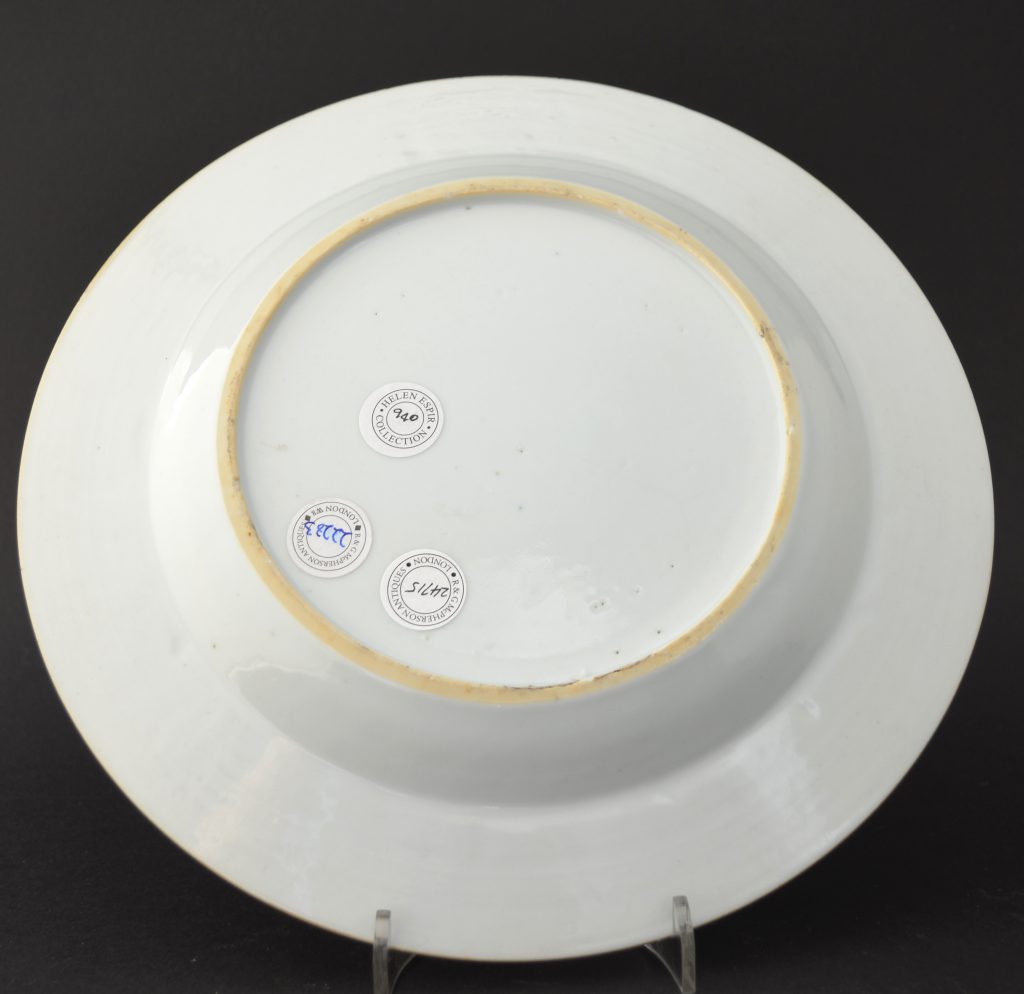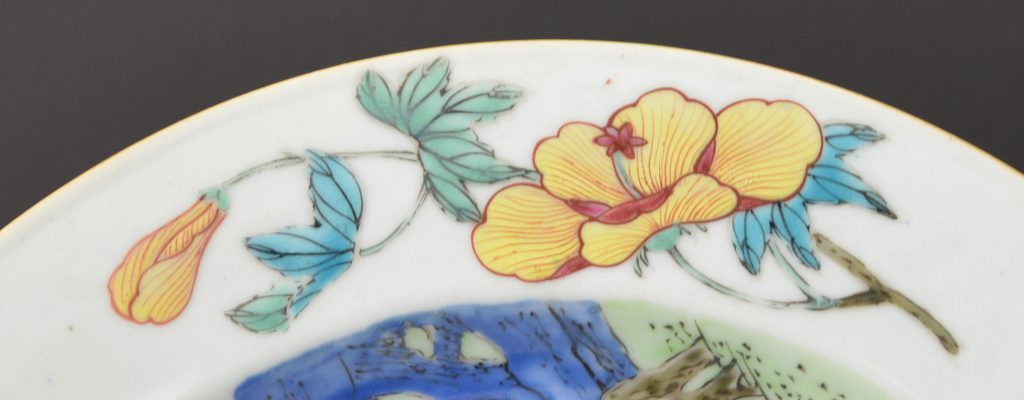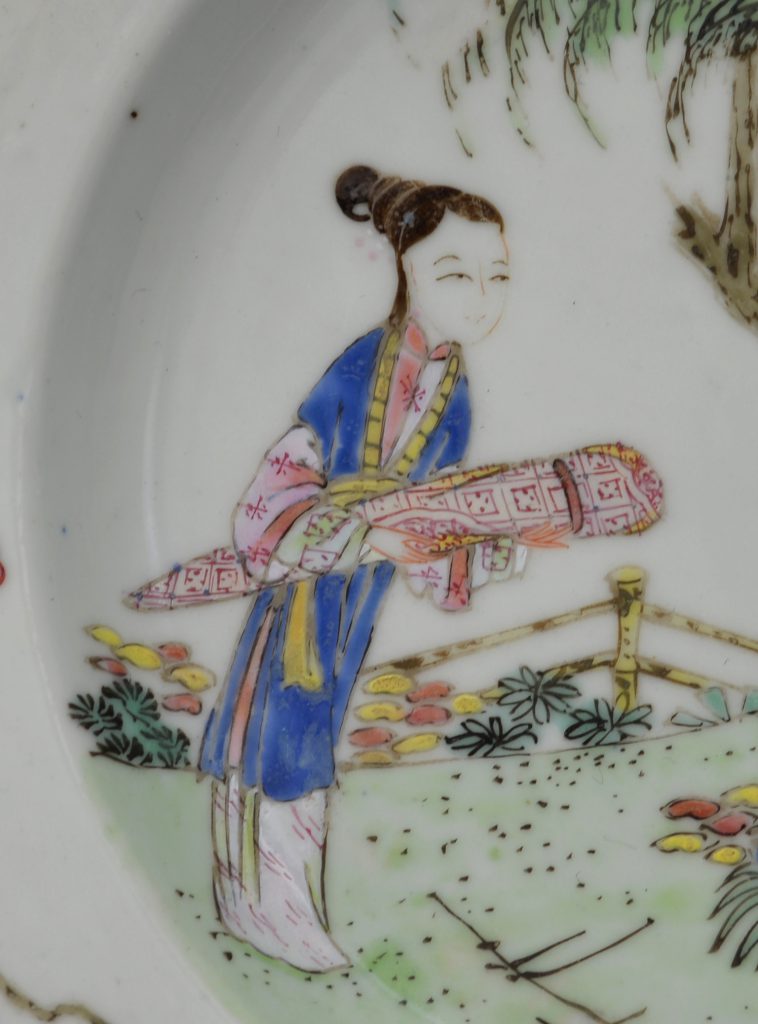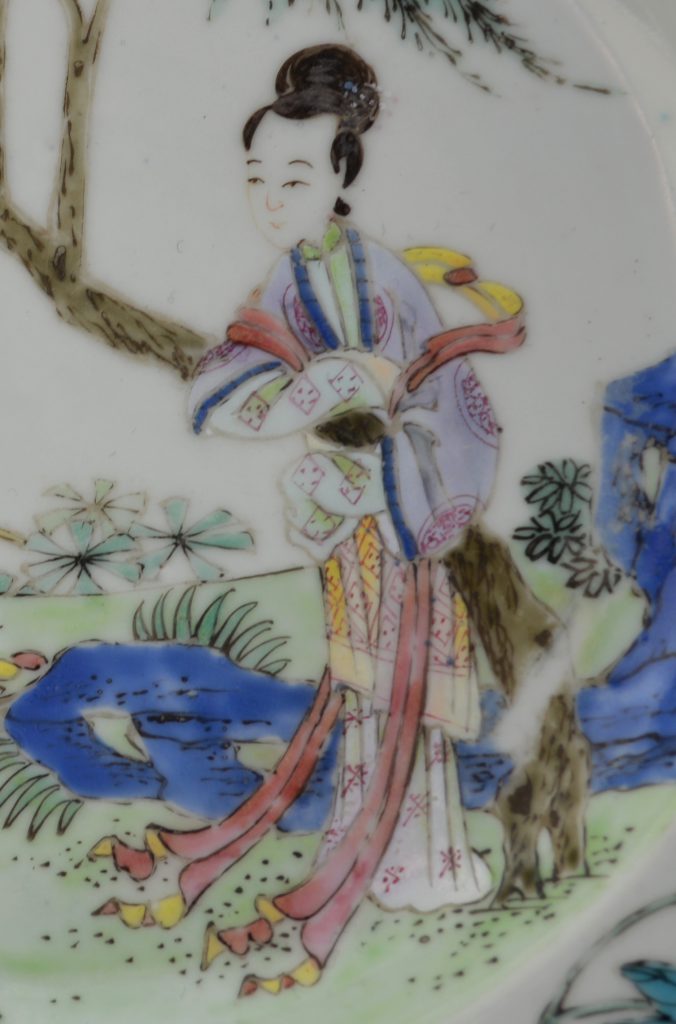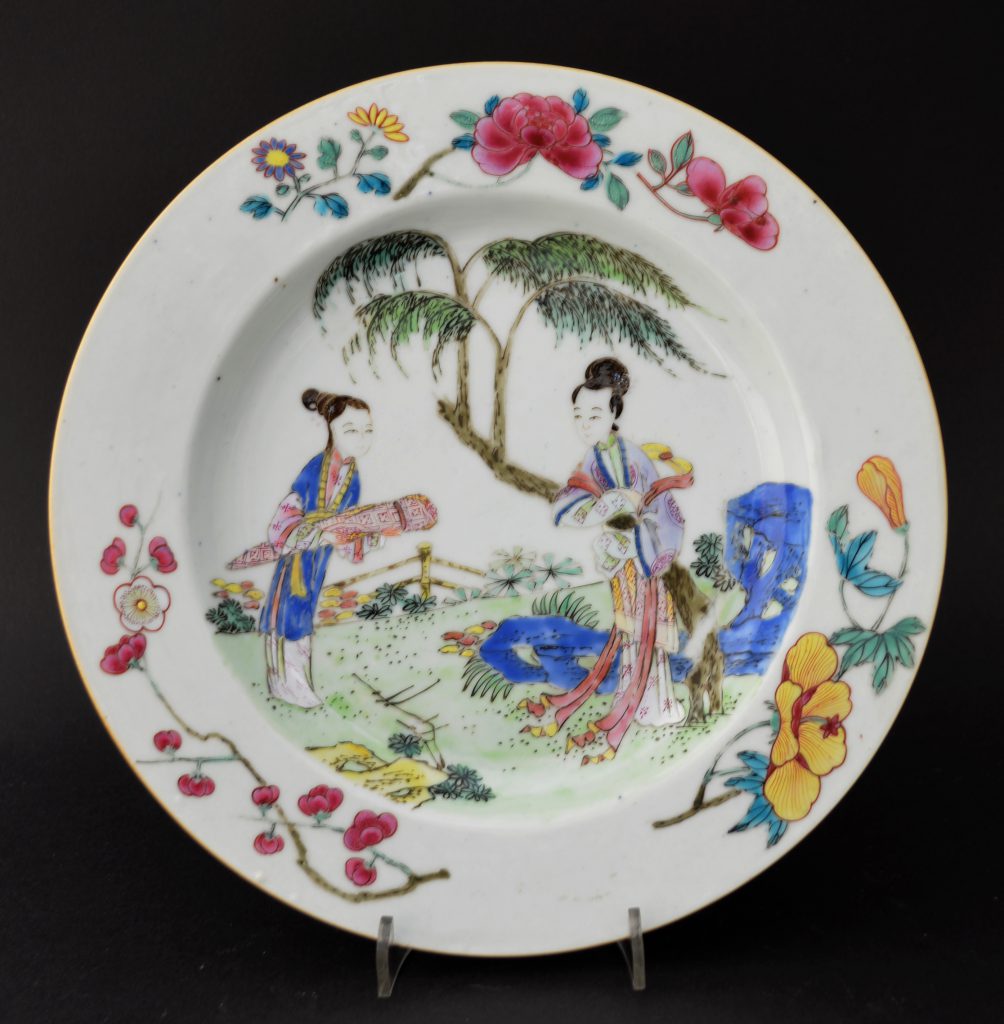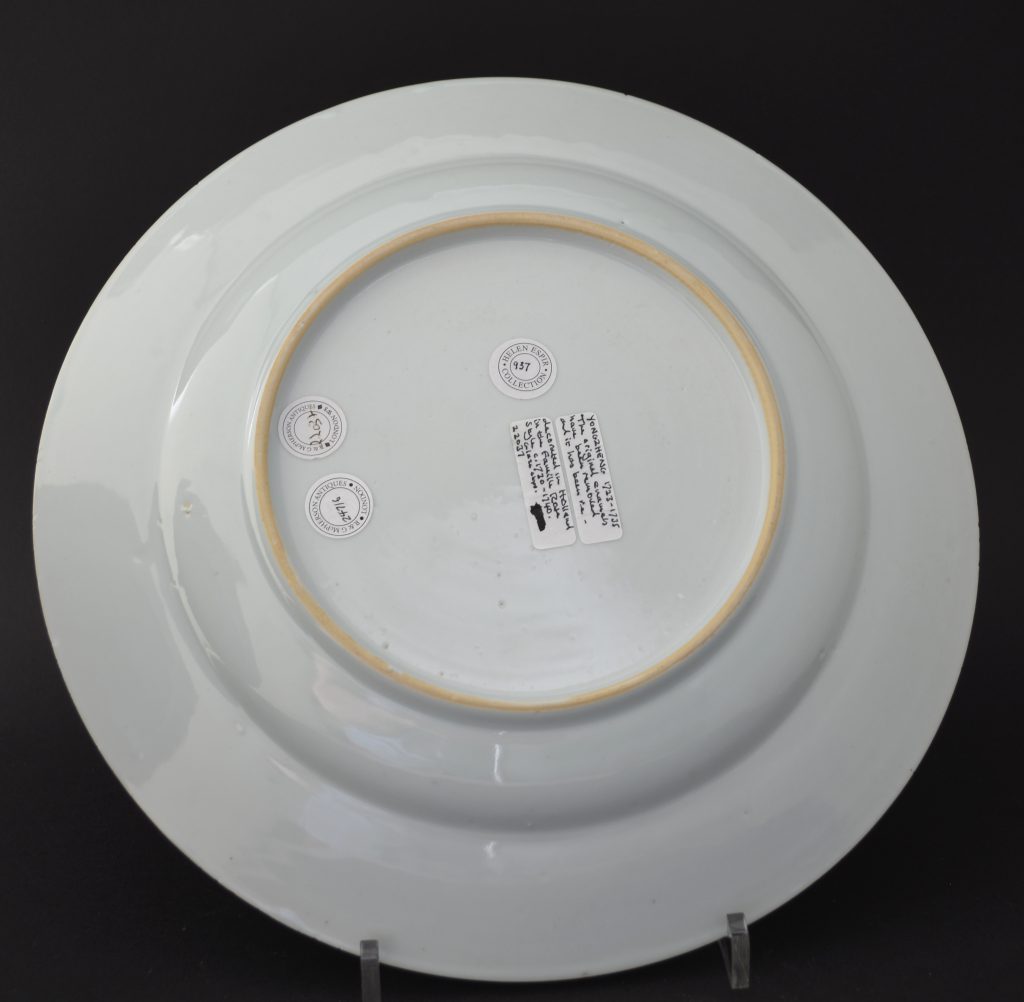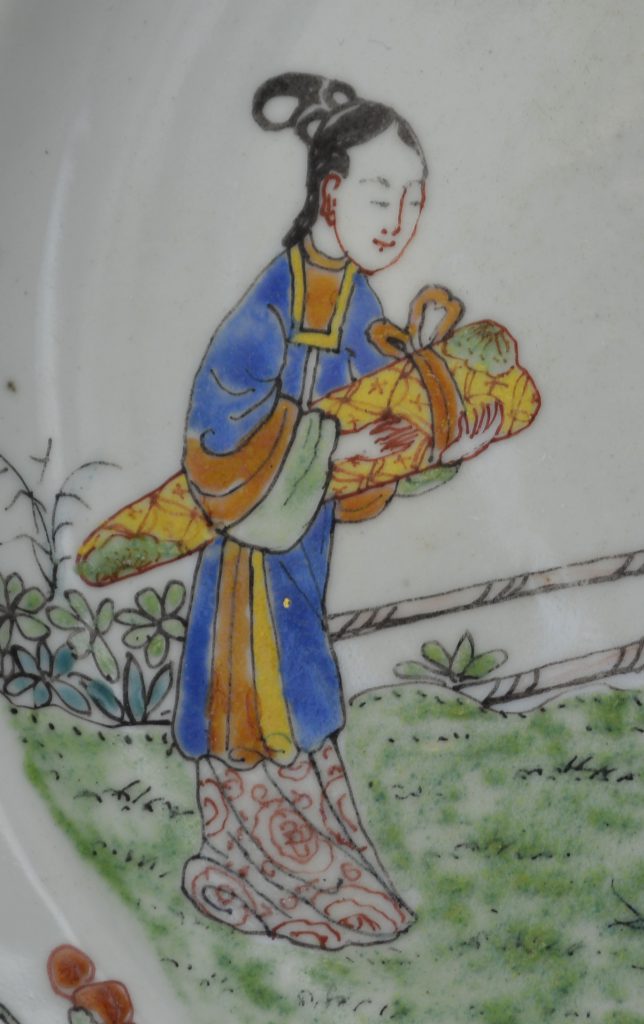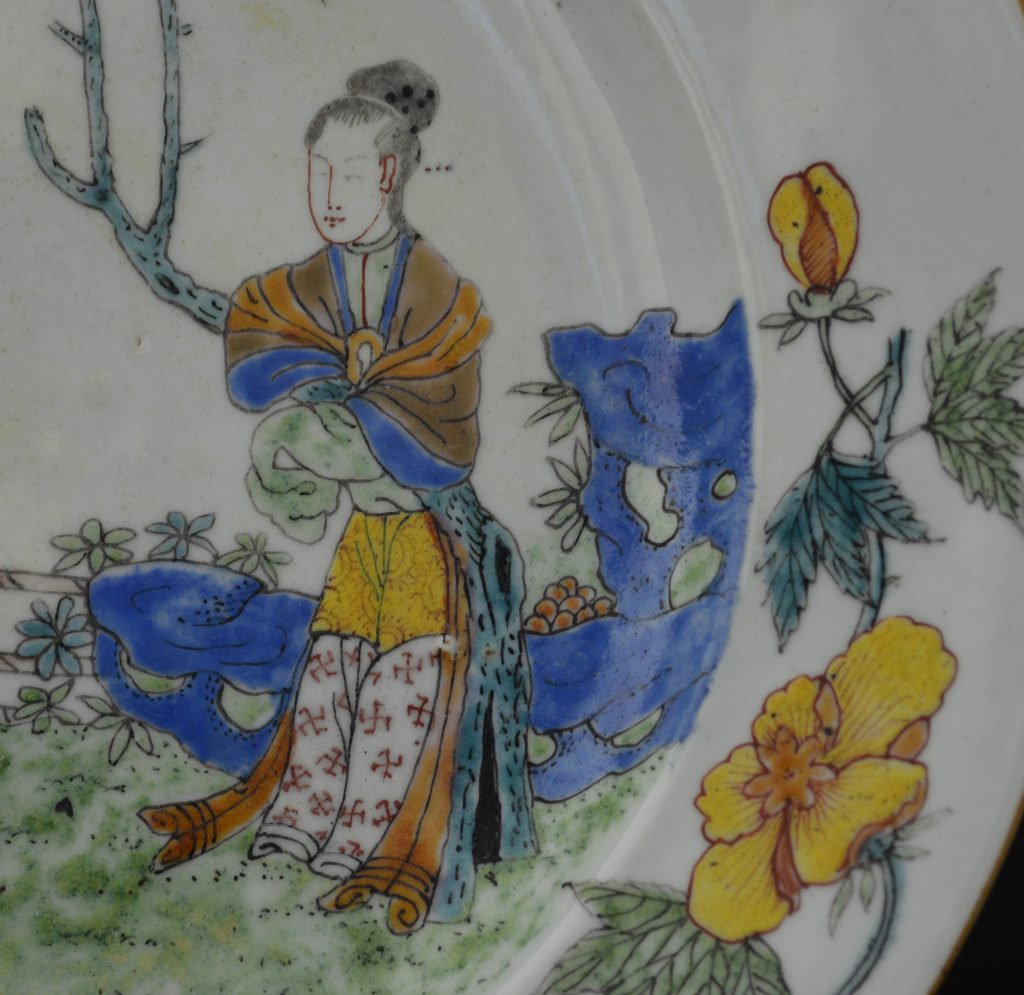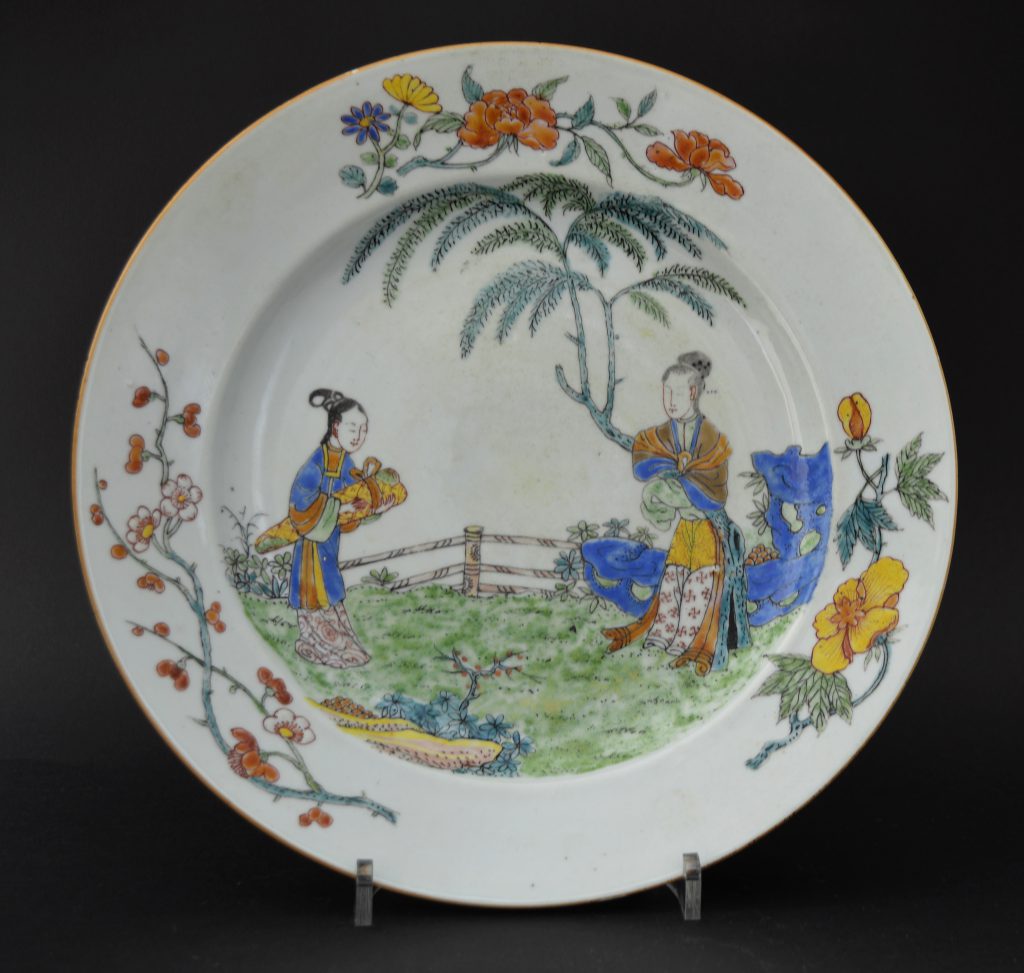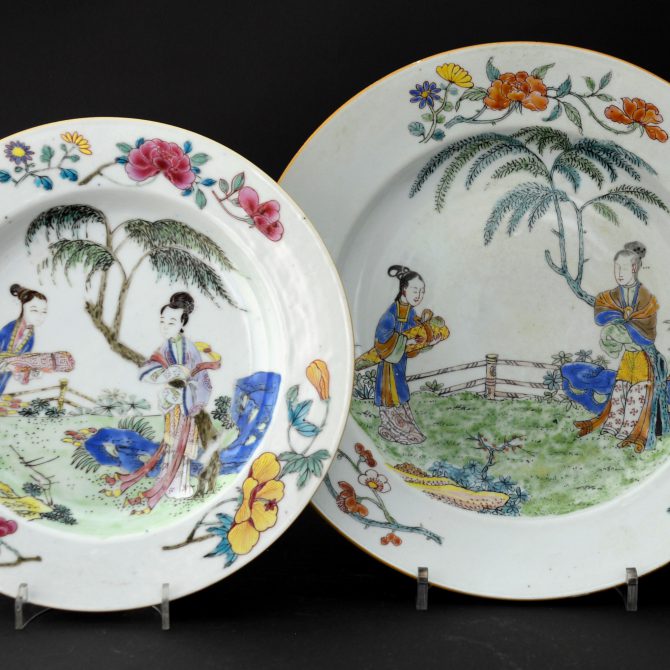
A Very Rare 18th Century Dutch Decorated Dish and The Smaller Yongzheng Dish Prototype
A very rare Dutch re-decorated Chinese Export porcelain dish, Yongzheng Period 1723-1735, decorated in Holland in c.1730 – 1740. Entirely painted in Holland in the style and palette of early Famille Rose Porcelain with two well dressed figures in a garden landscape. A lady on the right receives a Guqin wrapped in cloth from a female servant. The original Chinese decoration has been totally erased but is visible due to a feint `shadow` of the original design showing. This appears to been of simple scattered flowers with diaper border.
Sold together with –
An 18th century Chinese Export Porcelain plate in the Chinese taste, Yongzheng period 1723 – 1735. This plate is painted using an early version of the Famille Rose palette. It depicts a servant presenting an elegant lady with a Qin wrapped in a fine cloth, she stands by rocks in a garden with an old willow tree. The border is of flowering branches including plum (Prunus) and peony.
SOLD
- Condition
- The Chinese decorated plate has a sealed hairline crack c.42 mm. The larger dish with Dutch over-decoration is in very good conditions with just a few very small glaze frits.
- Size
- The Chinese decorated plate, Diameter : 22.6 cm (9 inches). The Dutch decorated dish, Diameter : 27.7 cm (10 3/4 inches).
- Provenance
- Both purchased in Holland. The Dutch decorated plate, R and G McPherson Antiques 1st of February 2011, the Chinese decorated plate ; R and G McPherson 14th of April 2011. The Helen Espir Collection of European Decorated Chinese Export Porcelain : "a member of the Oriental Ceramic Society and collector, with her husband. Having made a typical collection of Song and provincial Ming blue and white, they decided to concentrate on what used to be called `clobbered` porcelain. She is the author of the standard work on the subject, European Decoration on Oriental Porcelain,2005, the first to examine the work of European decorators on Chinese porcelain throughout the eighteenth and nineteenth centuries, focusing on enamellers in Holland, Germany and England. She has learned Chinese." From Provenance ; Collectors, Dealers & Scholars : Chinese Ceramics in Britain & America (Roy Davids, Dominic Jellinek, Privately Printed, 2011. ISBN 978-0-9570148-0-0).
- Stock number
- 24715
Information
A Chinese Taste Plate in Holland in c.1730
It is sometimes difficult when looking at Chinese porcelain to discern what was made for export to the West and what was made for the domestic market. The design of the present piece as well as the subject matter are Chinese in taste, but the shape is Western. The arrangement of the border and the way it is painted is very much in Chinese taste, but there is something about the layout of the figures that also points to this plate being made for the West. Looking at it I would have no doubt it was made for the West. But in this rare instance we have proof this piece was made for the West. We had a dish of a slightly larger size, its enamels had been removed, it originally had a different design. The pattern used on the present example was then painted on the blank porcelain in Holland in the 1730`s.
Re-Decorated Chinese Porcelain :
For convenience it might be practical to divide European decoration of Chinese export porcelain into three groups. Firstly where the European decoration had been used to augment the existing Chinese enamel, blue and white or incised decoration, see stock number 21823 for an example. This was used to enliven designs that were rather plain or indeed sometimes where the Chinese porcelain was undecorated to start with. The second group can be termed `over-decorated`, where the European enamelling was added partly or wholly on top of the existing Chinese enamels, sometimes taking no notice of the original design, see stock number 21567 for an example. The last and by far the least common, where the original Chinese enamels have been partly or entirely removed so as to leave some space or a `blank canvas` for the European decorator. Chinese porcelain with European decoration is rarely encountered where the whole of the original design has been removed because it must have been a very laborious and expensive solution to improving the object, stock number 22037 is the only example were have had. The point of adding European decoration was, of cause, to increase the desirability of the Chinese porcelain object and so increase the profit of the merchant. One of these techniques would have be selected to improve the saleability of the porcelain by making it more attractive and more in keeping with current fashions.
Qin or Guqin :
Guqin is the modern name for a plucked seven-string Chinese musical instrument of the zither family. It has been played since ancient times, and has traditionally been favoured by scholars and literati as an instrument of great subtlety and refinement, as highlighted by the quote "a gentleman does not part with his qin or se without good reason," as well as being associated with the ancient Chinese philosopher Confucius. It is sometimes referred to by the Chinese as "the father of Chinese music" or "the instrument of the sages". Traditionally the instrument was called simply qin but by the twentieth century the term had come to be applied to many other musical instruments as well: the yangqin hammered dulcimer, the huqin family of bowed string instruments, and the Western piano are examples of this usage. The prefix "gu-" (meaning "ancient") was later added for clarification. It can also be called qixianqin (lit. "seven-stringed instrument"). The guqin is not to be confused with the guzheng, another Chinese long zither also without frets, but with moveable bridges under each string. Because Robert Hans van Gulik`s famous book about the qin is called The Lore of the Chinese Lute, the guqin is sometimes inaccurately called a lute.
